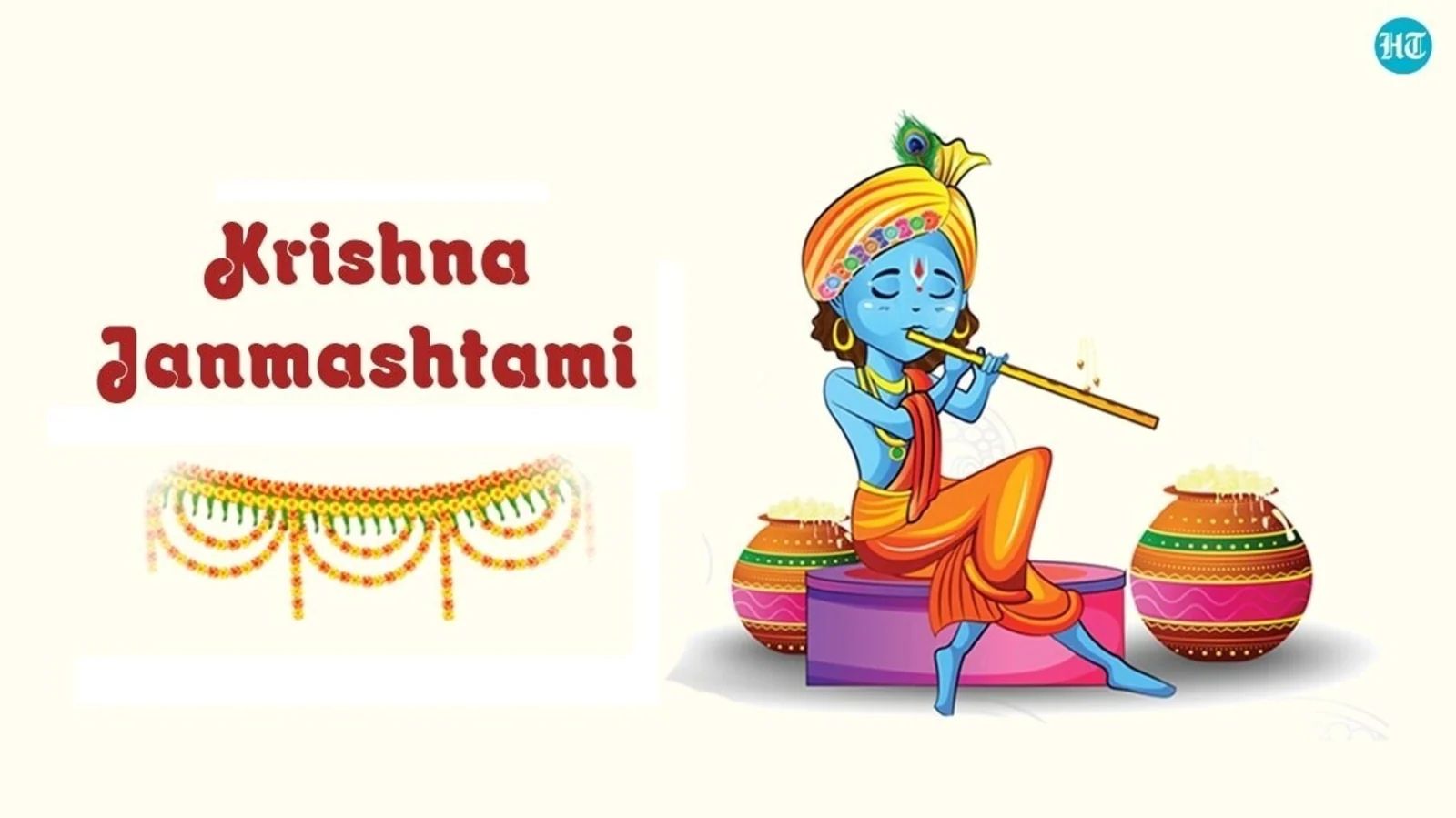
Here, we are presenting long and short Essay and Paragraph on Janmashtami in English for students under word limits of 100 – 150 Words, 200 – 250 words, and 500 – 600 words. This topic is useful for students of classes 1, 2, 3, 4, 5, 6, 7, 8, 9, 10, 11, and 12 in English. These provided essays will help you to write effective essays, paragraphs, and speeches.
100 Words Essay and Paragraph on Janmashtami
Janmashtami is a joyful Hindu festival commemorating the birth of Lord Krishna. The festival takes place in August or September. It is identified by vibrant decorations and events. First and foremost, people clean and decorate their homes. Second, they make lovely swings for Lord Krishna.
Devotees fast until midnight on Janmashtami, when Lord Krishna is said to have been born. Hymns and prayers fill the temples. The Dahi Handi event, in which a pot of yogurt is hung high and young boys form human pyramids to break it, is the highlight. Janmashtami promotes unity and celebration by teaching us about love, joy, and devotion to God.
250 Words Essay and Paragraph on Janmashtami
Janmashtami is a special festival celebrated in India to honor the birth of Lord Krishna, who is thought to be Lord Vishnu’s eighth incarnation. This joyous occasion is celebrated with great zeal and devotion throughout the country.
Lord Krishna was born in Mathura, a city in northern India, according to legend. His birth was unusual because it occurred in a prison cell, and he miraculously escaped the clutches of the evil King Kansa, who sought to harm him. This occurrence represents the triumph of good over evil.
People decorate their houses and temples with vibrant lights and flowers on Janmashtami. Many people observe fasts, which are then broken with a lavish feast. Bhajans, or devotional songs that express devotion and reverence for Lord Krishna, are sung by devotees when they get together.
An unusual custom connected to Janmashtami is the Dahi Handi celebration. In order to reach and shatter a pot full of butter or curd, participants must form human pyramids. This is a cooperative and coordinated task. This custom represents Lord Krishna’s carefree and mischievous personality from his early years.
In addition to the joyous festivities, Janmashtami imparts valuable life lessons. The life of Lord Krishna serves as a lesson in the value of dharma (righteousness) and bhakti (devotion) for a happy and purposeful existence.
To sum up, Janmashtami is a time to consider the morals and lessons that Lord Krishna taught us during his life, in addition to commemorating his birth. The celebration unites localities and promotes joy and unity that cut across cultural divides.
400 Words Essay and Paragraph on Janmashtami
Hindus celebrate Janmashtami as a special day to commemorate the birth of Lord Krishna, one of the most adored and respected gods in Hinduism. According to the Hindu calendar, this happy occasion usually occurs in the months of August or September.
The Bhagavad Gita contains teachings from Lord Krishna, who is well-known for his charming and mischievous stories from childhood. Hindus around the world celebrate Janmashtami with great fervor and devotion, and both children and adults have a special place in their hearts for this day.
Days before of this big day, people start cleaning and decorating their homes, local communities, and temples in preparation for the festivities. As everyone gets ready for the big celebration, excitement and anticipation are in the air. Little clay pots with butter within are frequently suspended from tall poles as a symbol of Krishna’s childhood playfulness and love of butter.
People observe fasts, offer prayers, and sing devotional songs all day long on Janmashtami. A feeling of happiness and spirituality permeates the air as evening draws near and temples and residences are decked out in vibrant decorations. Numerous communities arrange cultural events and programs aimed at recounting the captivating tales of Lord Krishna’s early years.
The Dahi Handi celebration is one of Janmashtami’s main attractions. It recreates the well-known story of Lord Krishna stealing butter when he was younger. A clay pot that is hung at a great height and contains curd, butter, and other sweets represents the difficulties Krishna and his friends encountered getting to the hanging pot. Exuberant groups of children create human pyramids to shatter the pot and retrieve its contents, demonstrating solidarity, strength, and teamwork.
The midnight hour holds particular significance since it is thought to be the precise moment of Lord Krishna’s birth. Bells and chants reverberate throughout temples, fostering a spiritual ambiance. In celebration of their favorite deity’s birth, devotees share sweets, sing bhajans, and offer prayers.
Janmashtami is more than just a religious holiday; it’s a time for communities and families to unite, celebrate, and deepen relationships. It imparts moral lessons about the importance of standing up for what is right, love, and compassion—all of which are reflected in the life and teachings of Lord Krishna.
In conclusion, people of all ages gather to celebrate the birth of Lord Krishna on Janmashtami, which is a colorful and joyous occasion. Hindus all across the world love and look forward to this festival because of the stories of his childhood adventures, which never cease to inspire and amuse them.
Also Read: Essay On National Festivals For Students of Class 5 to 12